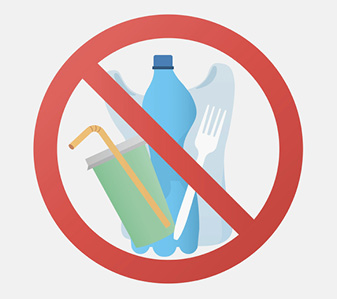
Canada’s Zero Plastic Waste plan – the latest Food in Canada column from Carol Zweep
Food in Canada Staff
Packaging
The Canada-wide Action Plan on Zero Plastic Waste is an ambitious and collaborative effort, and support from government, industry and citizens is needed to achieve a circular economy with less plastic waste. This is the view of Carol Zweep, senior manager of Packaging, Product Innovation and Compliance for NSF International, in her latest Food in Canada packaging column.
On October 7, the Minister of Environment and Climate Change announced the next steps in the Government of Canada’s plan to achieve zero plastic waste by 2030. This announcement proposes a ban on single-use plastic items (plastic checkout bags, straws, stir sticks, six-pack rings, cutlery and foodware made from hard-to-recycle plastics). Because personal protective equipment (PPE) has played an important role in keeping Canadians safe during the COVID-19 pandemic, the ban on single-use plastics will not impact the use of PPE.
The next step of the plan also proposes set recycled content targets in plastic products and advances extended producer responsibility (EPR). There is also a proposed order to add “plastic manufactured items” to Schedule 1 of the Canadian Environmental Protection Act, 1999 (CEPA). The publication of the final Science Assessment of Plastic Pollution document supports a scientific basis to designate “plastic manufactured items” as toxic.

Background
The Canada-wide Strategy on Zero Plastic Waste was introduced in November 2018 by the Canadian Council of Ministers of the Environment (CCME). This strategy was built on the Ocean Plastics Charter. There are three million tonnes of plastic waste thrown away by Canadians every year. With only nine per cent of plastic waste being recycled, most of the plastic ends up in landfills. If plastic waste is released into the environment outside a managed waste stream, it becomes plastic pollution. This plastic pollution is being found in our waterways and oceans and is causing harm to wildlife. In addition, microplastics (plastic fragments smaller than five millimetres) are being found in the water we use and drink.
The strategy applies the circular economy approach to plastics. What is the circular economy? It aims to keep products and materials in use as long as possible and closes the loop in the use of natural resources by reducing, reusing, repairing, remanufacturing, recycling and composting materials, and recovering energy at end-of-life. The three areas of activity for the strategy are prevention, collection and clean-up, and value recovery.
Phases 1 and 2
In June 2019, Phase 1 of the Canada-wide Action Plan on Zero Plastic Waste was approved. The action items include EPR programs, addressing single-use plastics, creating performance requirements and standards, reviewing needs of waste management infrastructure, innovation in plastic life-cycle management, public procurement and green operations.
In July 2020, Phase 2 of the Action Plan was approved and targets the remaining result areas. The action items include: information exchange and awareness, aquatic activity waste management, fishing and aquaculture, capture and clean-up of plastic pollution, research and global leadership.
Call to action
Managing plastic waste can reduce environmental impacts and investment in innovation can create jobs for Canadians. There are several government-funded projects that are looking at alternatives for agriculture packaging, detecting and removing microplastics from wastewater systems, expanding citizen awareness, removing marine plastic litter, and increasing collection and diversion of plastic waste. The Canada-wide Action Plan on Zero Plastic Waste is an ambitious and collaborative effort, and support from government, industry and citizens is needed to achieve a circular economy with less plastic waste.
Carol Zweep is senior manager of Packaging, Product Innovation and Compliance for NSF International. Contact her at czweep@nsf.org
Print this page